As a plumbing expert, one of the most common problems I come across in my line of work is clogged toilets. This issue can be caused by a variety of factors such as flushing inappropriate items down the toilet or buildup of waste over time. While there are several ways to address this problem, one effective tool to have in your arsenal is a toilet auger.
A toilet auger, also known as a plumbing snake, is a flexible metal cable with an auger or corkscrew-like tip that can be inserted into the toilet drain to remove blockages. It is an essential tool for homeowners and plumbers alike and can save you time and money by addressing the issue before it becomes worse. In this article, we will discuss how to use a toilet auger effectively and safely so that you can take care of any clogs that may arise in your home.
Understanding The Anatomy Of A Toilet Auger
To properly use a toilet auger, it is essential to understand its mechanics. An auger is essentially a long, flexible metal cable with a handle on one end and a coiled head on the other. The coiled head of the auger is designed to snake through the drainpipe, breaking up any blockages along the way.
One of the most common mistakes people make when using an auger is not inserting it correctly into the toilet bowl. To avoid this mistake, ensure that you insert the coiled head of the auger into the drain hole at the base of the toilet bowl. This will ensure that it reaches deep enough into the pipe to break up any blockages.
Another mistake people make when using an auger is not having enough patience. It can take some time for an auger to work its way through a blockage, so be sure to move it back and forth slowly and steadily until you feel it break through. Rushing this process can result in damage to both your toilet and your plumbing system. Understanding these mechanics and avoiding common mistakes can help you use your toilet auger effectively and safely.
With an understanding of how an auger works and what pitfalls to avoid, you can now focus on identifying when it’s appropriate to use one.
Identifying When To Use A Toilet Auger
When your toilet refuses to flush and the water rises up, it can be a frustrating experience. Before you panic, it’s essential to identify the cause of the problem. Usually, blockages in the trap or further down in the drain pipeline are the culprits. If plunging doesn’t solve the issue, then it’s time to consider using a toilet auger.
Identifying causes of toilet clogs is crucial in determining when you need to use a toilet auger. Clogged pipes can occur due to various reasons such as flushing inappropriate items down the toilet, mineral buildup caused by hard water, and poor drainage due to old pipes. By recognizing what triggers clogs in your plumbing system, you’ll know when it’s necessary to use an auger.
Proper maintenance of your plumbing system is vital in preventing blockages and determining when an auger is needed. Regular cleaning of pipes using natural products like baking soda and vinegar can prevent build-up that causes clogs. Avoid flushing non-degradable items such as wipes and feminine hygiene products down your toilet as they don’t break down quickly and can block pipes. Additionally, annual inspections by professional plumbers for potential problems can help spot issues before they escalate.
To prepare for using an auger on your blocked toilet, ensure that you have all necessary tools at hand, including gloves and goggles for protection against splash-backs of sewage water. Also, remove any excess water from the bowl before inserting the auger to make it easier to snake through bends in the pipe. Finally, make sure you follow all manufacturer instructions carefully when handling this tool for optimal results.
In summary, identifying when you need to use an auger goes beyond just knowing that your toilet won’t flush correctly; it requires understanding what causes clogs and proper maintenance practices that prevent them from occurring in the first place. By following these steps, you can prepare yourself for the job ahead and tackle clogs with confidence.
Preparing For The Job
Before using a toilet auger, it is essential to prepare the necessary tools and clear any obstacles that may hinder your work. Preparing tools means having all the materials you need on hand before starting the job. For instance, you will need a toilet auger, rubber gloves, a bucket, and possibly some towels to clean up any water spills. Ensure that your toilet auger is in good condition by checking for any wear and tear and ensuring it’s not rusted; otherwise, it may break during use.
Clearing obstacles involves removing anything that may hinder the flow of water or trap debris in the pipes. You can start by turning off the water supply to prevent any further flushing of waste into the pipes. Next, remove all visible debris around the toilet bowl using a plastic bag or gloves. Use a plunger to clear any blockages that are close to the surface before proceeding to use an auger.
The table below outlines some common obstacles that an auger can help clear and how best to approach them.
| Obstacle | How to Clear |
|---|---|
| Hardened Debris | Auger through multiple times |
| Hair Clogs | Rotate clockwise & anticlockwise |
| Foreign Objects | Extract carefully with pliers |
| Tree Roots | Seek Professional Help |
Preparing for the job is crucial when using a toilet auger since this ensures success in unblocking your toilet. This process involves gathering all necessary tools such as rubber gloves, buckets and towels while also checking your equipment’s condition before beginning work. Additionally, clearing obstacles such as debris around the toilet bowl and turning off water supply will make your job easier by reducing chances of clogging somewhere else in pipes. In choosing which type of auger best suits your needs next step will be selecting from different types available on market based on budget constraints or specific requirements like length or material used for construction.
Choosing The Right Type Of Auger
Types of augers are important to consider when looking for the right tool to unclog your toilet. There are two main types of augers: handheld and drum. Handheld augers, also known as closet augers, are designed for removing clogs in the toilet bowl itself. These can be useful for removing smaller blockages that don’t require a more heavy-duty tool. Drum augers, on the other hand, are designed for larger blockages and are often used by professional plumbers.
When using an auger, it’s important to understand its usage. The key is to insert the end of the auger into the toilet bowl and slowly turn it clockwise until you feel resistance from the clog. Then, you’ll want to use a back-and-forth motion to break up the obstruction until it clears. It’s important to note that while an auger can be effective in removing clogs, it should not be used too frequently as it could potentially damage your pipes.
Choosing the right type of auger will depend on your specific needs and experience level with plumbing tools. Handheld augers may be better suited for beginners or those dealing with smaller blockages, while drum augers may be more appropriate for larger or more persistent obstructions. Ultimately, understanding how each tool works and its limitations can help ensure success in clearing your clogged toilet without causing any further damage or complications.
Transition: Now that you’ve chosen the right type of auger for your job, let’s move onto another important step in clearing a clogged toilet: removing the toilet tank lid.
Removing The Toilet Tank Lid
To use a toilet auger, one must first remove the tank lid. This is an essential step in the process as it allows for easier access to the toilet’s internal plumbing. However, it is important to proceed with caution when removing the tank lid to avoid causing damage.
To remove the tank lid, start by locating the small bolts or screws that hold it in place. These are typically located on the underside of the lid and can be easily identified by their size and shape. Using a suitable tool such as a screwdriver or wrench, carefully loosen these bolts until they are loose enough to remove by hand.
Once you have removed all of the bolts, gently lift the lid off of the tank and set it aside in a safe location. Be sure not to drop or mishandle it as this could cause cracks or other damage that may require expensive repairs. With the tank lid removed, you can now proceed with inserting your toilet auger into the drain to clear any blockages that may be present.
Inserting The Auger Into The Drain
After successfully removing the toilet tank lid, it’s time to move on to the next step in using a toilet auger. Now, this is where things get interesting because you’re about to witness the power of plumbing in action. But first, let me caution you: never underestimate the importance of aligning the auger properly before use.
The alignment of your auger can make or break your plumbing experience. So, take your time and adjust its length according to the depth of your drain. You don’t want to risk pushing too hard and damaging the porcelain bowl or scratching it with metal components. Once you’ve aligned and adjusted its length, it’s time to insert it into the drain.
Slowly feed in the auger while turning it clockwise simultaneously. This will help you navigate around any bends or obstructions that may be causing a blockage. Remember not to force anything if there is resistance as this could damage your equipment or worsen the blockage. Keep feeding and turning until you feel resistance ease up or notice a change in water flow. The next section will detail further steps on how to turn and feed your auger for optimal results.
Turning And Feeding The Auger
- Turning the auger requires the insertion of the tip of the auger into the toilet bowl drain and then slowly rotating it clockwise to break through any clogs.
- Care should be taken to ensure that the auger doesn’t damage the porcelain as it is being turned.
- Feeding the auger requires the insertion of the tip of the auger into the toilet bowl drain and then slowly pushing it further down the drainpipe.
- The auger should be carefully fed until it reaches the clog, ensuring that it does not become stuck or tangled in the pipe.
Turning The Auger
When it comes to using a toilet auger, turning the auger is a crucial step in clearing blockages efficiently. Practicing technique is key to successfully turn and feed the auger. The goal is to use enough force to break through the obstruction without causing damage to the plumbing system.
To turn the auger, start by inserting the end of the cable into the toilet bowl and rotating the handle clockwise. This motion will cause the cable to twist and create a corkscrew effect. As you continue to rotate, apply gentle pressure until you feel resistance from the obstruction. At this point, increase your force gradually while continuing to twist the auger until you feel it break through.
It’s important to remember that turning an auger requires patience and practice. Avoid using excessive force or twisting too quickly as this can lead to damage within your pipes. With consistent practice, you’ll be able to effectively turn and feed an auger for clearing blockages efficiently without causing harm to your plumbing system.
Feeding The Auger
Proper technique in using a toilet auger involves not only the turning of the auger but also its feeding. Feeding the auger is an essential step in clearing blockages effectively. It refers to the process of pushing the cable down into the drain until it reaches and breaks through the obstruction.
To feed an auger, start by inserting its end into the toilet bowl and rotating the handle clockwise to twist it. As you turn, gradually push down on the cable to make it move further into the drain. Keep feeding until you feel resistance from the blockage. At this point, stop turning and apply gentle pressure while pushing down on the cable. Then, slowly turn again while maintaining this pressure until you feel it break through.
One common mistake when feeding an auger is applying too much pressure or twisting too quickly. This can cause damage within your pipes or even break off parts of your plumbing system. Always remember that proper technique involves patience and practice to avoid such mishaps and ensure safe and efficient clearing of blockages with a toilet auger.
Breaking Through The Clog
Useful techniques for breaking through a clog with a toilet auger include positioning the auger correctly, using steady pressure, and turning the handle clockwise. When you insert the auger into the toilet bowl, make sure to aim it towards the drain and not towards the porcelain. Once inserted, apply gentle but constant downward pressure while turning the handle clockwise. This will help to break up any blockages in the pipe.
One of the most common mistakes people make when using a toilet auger is pulling too hard on the cable. Doing this can cause damage to your plumbing system, resulting in costly repairs. Instead, use steady pressure and allow the auger to work its way through any clogs that are present. If you encounter resistance, stop turning and gently push or pull on the cable instead.
Another mistake people often make is not giving enough time for the auger to do its job. It’s important to be patient and allow the auger to work through any blockages slowly but surely. If you rush or become impatient, you may end up causing more damage than good.
Moving onto our next section about retrieving the auger without damaging your toilet bowl or plumbing system…
Retrieving The Auger
Metaphorically speaking, a toilet auger is like a superhero for your plumbing problems. It can save the day by unclogging the most stubborn of blockages. However, after using it, proper handling and storage are crucial to ensure safety and longevity.
Retrieving the auger from the drain after use requires careful attention to detail. Before you remove the auger from the toilet bowl, make sure to turn it in a clockwise direction to avoid any potential messes. Once you have successfully dislodged the clog, slowly pull out the auger from the toilet while rotating it in a counterclockwise direction.
After retrieving the auger, storing it safely is of utmost importance. Follow these bullet points to ensure proper handling and storage:
- Wear gloves when handling an auger as it may contain bacteria and other harmful substances.
- To prevent rusting, clean and dry your auger thoroughly before storing it.
- Store your auger in a dry place away from children and pets.
- Avoid coiling or bending your auger as this may cause damage over time.
- If your auger has become worn or damaged, dispose of it immediately and replace it with a new one.
With these precautions in mind, you can safely store your toilet auger until its next use. Now that we have retrieved and stored our trusty plumbing tool safely let’s move on to the next step: flushing the toilet.
Flushing The Toilet
- Before attempting to use a toilet auger, it is important to remove any blockages from the toilet trap and clean out any debris that could interfere with the auger’s functionality.
- To clean the trap, it is necessary to remove the toilet tank lid and use a pair of pliers to unscrew and remove the closet bolts.
- After the trap is clean, it is time to insert the auger into the toilet bowl and turn the handle clockwise to break up and remove the blockage.
- As the auger is rotated, it is important to be mindful of the angle of the cable and the pressure applied to ensure that the auger is not pushed too far into the drain.
Cleaning The Trap
To properly flush a toilet, it is important to ensure that the trap is clean. The trap is the curved section of the toilet’s drainpipe that prevents sewer gases from entering the bathroom. Over time, debris such as hair, paper products, and even foreign objects can accumulate in the trap and cause clogs. Cleaning the trap requires proper technique to avoid damaging the porcelain or causing leaks.
One common mistake when cleaning the trap is using too much force with a plunger or auger. While these tools can be effective for breaking up a clog, they can also damage the porcelain or push an obstruction further down into the drainpipe. It is important to use gentle pressure and work slowly when attempting to clear a clog. Another mistake is failing to wear protective gloves, as this can expose one to harmful bacteria present in sewage waste.
To clean the trap, begin by turning off the water supply valve and flushing any standing water from the bowl. Place towels around the base of the toilet to catch any spills or splatters. Insert a toilet auger into the drain opening and gently rotate it back and forth while applying slight pressure until you feel resistance. This resistance indicates that you have reached the obstruction causing your clog. Slowly turn your auger counterclockwise while pulling it outwards until you remove any debris caught in its coils.
By following these steps, you can efficiently clean your toilet’s trap without damaging your plumbing system or risking exposure to harmful bacteria present in sewage waste. Remember to take caution when handling plumbing tools and always wear protective gloves when cleaning toilets or drains.
Inserting The Auger
Understanding the technique of using a toilet auger is essential in properly cleaning the trap of your toilet. A toilet auger, also known as a plumbing snake, is a tool specifically designed for clearing clogs in toilets and drains. It consists of a flexible metal coil that can reach deep into the drainpipe to break up obstructions and remove debris. However, it is important to note that using an auger incorrectly can cause damage to your plumbing system.
Safety measures should be taken when using a toilet auger to clean your toilet’s trap. It is recommended to wear protective gloves to avoid direct contact with sewage waste and reduce the risk of exposure to harmful bacteria. Additionally, it is crucial not to use excessive force when inserting the auger into the drain opening as this can push blockages further down the pipe or even crack the porcelain. Proper technique and gentle pressure are key when attempting to clear a clog with an auger.
When inserting the auger, place it into the drain opening and gently rotate it back and forth while applying slight pressure until you feel resistance. Once you have reached the obstruction causing your clog, slowly turn your auger counterclockwise while pulling it outwards until you remove any debris caught in its coils. Be sure not to force or twist too much as this may cause damage or worsen blockages. Remember these safety measures and techniques for effectively cleaning your toilet’s trap with an auger without causing harm or damage.
Cleaning The Auger
After using a toilet auger, it is important to clean and maintain it properly to ensure its longevity. One of the most effective cleaning techniques is to run hot water through the auger after use. This helps to remove any debris and prevent clogging in the future. Additionally, wiping down the cable with a clean cloth or paper towel can help remove any remaining residue.
Another important maintenance tip is to keep the auger stored in a dry place when not in use. Moisture can cause rust and corrosion which can ultimately damage the tool. It is also recommended to oil the cable periodically as this helps to protect it from rust and corrosion.
By following these cleaning techniques and maintenance tips, you can prolong the life of your toilet auger and ensure that it remains in good working condition for years to come. However, if you do encounter any issues with your auger despite proper care, there are troubleshooting steps you can take to diagnose and fix common problems.
Next up, we will discuss some common issues that may arise when using a toilet auger and how to troubleshoot them effectively.
Troubleshooting Common Auger Issues
When using a toilet auger, it is not uncommon to encounter certain issues that can hinder its effectiveness. Some of the most common problems include the auger becoming stuck or breaking off inside the pipe, causing further damage to your plumbing system. Fortunately, there are some simple troubleshooting tips that you can follow to prevent and resolve these issues.
Common solutions for a stuck auger include wiggling and twisting it gently to loosen any blockages. If this does not work, you may need to use pliers or a wrench to turn the handle in the opposite direction. Another option is to apply lubricant to the cable before inserting it into the toilet, as this can help it slide more easily through the pipe.
If your auger breaks off inside the pipe, do not panic. While this can be a frustrating situation, there are some ways to retrieve the broken cable without causing further damage. One method is to use a hook or needle-nose pliers to grab onto the end of the cable and slowly pull it out. Alternatively, you could try flushing out any debris with water or using a drain snake to push through any remaining blockages.
- Always wear gloves and eye protection when using an auger.
- Do not force the cable into the pipe if you encounter resistance.
- Never use an auger if there is standing water in the bowl or around your feet.
By following these common solutions and troubleshooting tips, you can effectively use your toilet auger without encountering any major issues. However, it is important to always take safety precautions when handling any plumbing equipment. In the next section, we will discuss some essential safety tips that you should keep in mind when using a toilet auger.
Safety Precautions
- When using a toilet auger, it is important to wear protective gear such as gloves, safety glasses and a dust mask.
- The water supply should be disconnected prior to use to prevent any accidental flooding.
- The toilet auger should be inserted into the toilet bowl slowly and with caution to avoid damaging the toilet.
- The toilet auger should be turned gently and slowly to avoid causing any damage to the toilet bowl.
- When the auger reaches the blockage, it should be turned clockwise and pulled back slowly to remove the blockage.
- After the blockage is cleared, the toilet auger should be removed from the toilet bowl and the water supply should be reconnected.
Wear Protective Gear
When it comes to using a toilet auger, it is important to prioritize safety at all times. One of the most crucial steps you can take to protect yourself during the process is to wear protective gear. This includes gloves, goggles, and sturdy footwear. By putting on appropriate clothing and accessories, you can significantly reduce your risk of injury or harm.
The importance of safety cannot be overstated when using a toilet auger. These powerful tools are designed to remove clogs from pipes and toilets, which means they can cause serious damage if not handled properly. When operating an auger, always make sure you have a clear understanding of how it works and what precautions you need to take in order to prevent accidents or injuries.
In conclusion, wearing protective gear is a vital part of staying safe while using a toilet auger. Always prioritize your own well-being by taking the necessary precautions before starting any plumbing work. With proper training and equipment, you can effectively unclog your toilet without putting yourself or others at risk for harm. Remember: when it comes to plumbing work, safety should always come first!
Disconnect Water Supply
Another important safety precaution when using a toilet auger is to disconnect the water supply. This step is critical in preventing any accidental water damage or electrocution while working on the plumbing. Before beginning the process, turn off the water supply valve located near the base of the toilet. Once turned off, flush the toilet to drain any remaining water from the bowl and tank.
After draining the water, you can begin using your toilet auger to remove any clogs or blockages. However, it is essential to keep in mind that even after turning off the water supply and draining out as much liquid as possible, there may still be residual water left in the pipes. To avoid getting drenched by this excess liquid or having it spill onto floors and carpets, ensure that you have towels or rags nearby, ready to use if needed.
Overall, taking these safety precautions into account before using a toilet auger can prevent potential accidents and injuries. By disconnecting the water supply and draining out remaining liquids before beginning work, you can minimize risks and make sure that your plumbing project goes smoothly without causing any harm. Remember to always prioritize safety first when working with plumbing tools!
Use Caution
When working with plumbing tools, it is essential to prioritize safety at all times. One crucial aspect of this is to use caution while using a toilet auger. This tool can be incredibly effective in removing clogs and blockages from your toilet’s pipes. However, if used improperly or without taking necessary precautions, it can lead to accidents and injuries.
To ensure that you stay safe while using a toilet auger, there are several safety tips that you should keep in mind. First and foremost, make sure that you have the right equipment for the job. Using an auger that is too short or too long can cause damage to your pipes or make it difficult to access the clog. Additionally, be mindful of your surroundings and wear appropriate protective gear such as gloves and goggles.
Another critical tip when using a toilet auger is to use caution at all times. Avoid forcing the auger into the pipe aggressively or pulling on it too hard, as this can cause damage or even break the tool itself. Take your time and work slowly but steadily through the blockage until it clears completely. By keeping these safety tips in mind when working with a toilet auger, you can ensure that your project goes smoothly without any mishaps or harm caused to yourself or others.
Tips For Preventing Toilet Clogs
Safety should always come first when using a toilet auger. Before attempting to use the tool, make sure to wear protective gear such as gloves and goggles. Keep in mind that the auger can be dangerous if not used properly, so it’s best to read the manufacturer’s instructions carefully before using it.
Preventive measures are key in avoiding toilet clogs. Some common causes of clogs include flushing non-degradable items such as wipes or feminine hygiene products down the toilet, as well as excessive use of toilet paper. To avoid these issues, consider investing in a bidet or reducing the amount of non-toilet paper items you flush.
Regular maintenance is also important in preventing toilet clogs. Consider using a drain cleaner once a month to keep your pipes clear and unclogged. Additionally, be mindful of what you’re putting down your drains and toilets, and avoid pouring grease or oil down the sink. By taking these preventive measures, you can help reduce the likelihood of needing to use a toilet auger or calling in a professional plumber.
When preventing measures don’t do the trick and you find yourself with a stubborn clog, it may be time to call in a professional plumber. If you’ve tried using an auger without success or notice other signs of plumbing issues such as slow draining sinks or foul odors coming from your pipes, it’s best to leave it to the experts. A professional plumber will have the knowledge and tools necessary to diagnose and fix any plumbing problems quickly and efficiently.
When To Call A Professional Plumber
While toilet augers can be an effective tool for clearing clogs, there are times when it is best to call a professional plumber. Here are some reasons why:
Safety Concerns: While using a toilet auger may seem simple enough, there are safety concerns that should not be overlooked. For example, if the auger is not used properly, it can cause damage to the toilet or even injure the person using it.
Complex Clogs: Some clogs are more complex than others and require more than just an auger to fix. A professional plumber has the expertise and tools needed to tackle these types of clogs.
Cost Effectiveness: While calling a professional plumber may seem like an added expense, in some cases it can actually save you money in the long run. If you attempt to fix a problem yourself and end up causing more damage, you will likely end up paying even more to have it fixed.
In summary, while using a toilet auger can be effective in many cases, there are times when it is best to call a professional plumber. Safety concerns, complex clogs, and cost effectiveness are all important factors to consider when deciding whether or not to attempt the repair yourself. Ultimately, it’s better to err on the side of caution and call in a professional if you’re unsure of what to do.
Conclusion
To effectively use a toilet auger, one must first understand the anatomy of the tool and identify when it is appropriate to use. It is important to prepare for the job by selecting the right type of auger and removing any obstacles that may impede its progress. Troubleshooting common issues and taking safety precautions are also essential steps in the process.
According to a study conducted by Consumer Reports, toilet clogs are one of the most common plumbing problems experienced by homeowners, accounting for over 30% of all calls to plumbers. This highlights the importance of knowing how to effectively use a toilet auger as a DIY solution.
While preventing clogs through proper use and maintenance is ideal, accidents can still happen. In such cases, using a toilet auger can save both time and money compared to calling in a professional plumber. However, it is crucial to follow proper procedures and take necessary precautions in order to avoid further damage or injury. By understanding how to effectively use a toilet auger, homeowners can confidently tackle this common plumbing issue on their own.
Image Credits
- “3-hole squatting plate of Earth Auger toilet – with mixing device for sawdust” by Sustainable sanitation (featured)

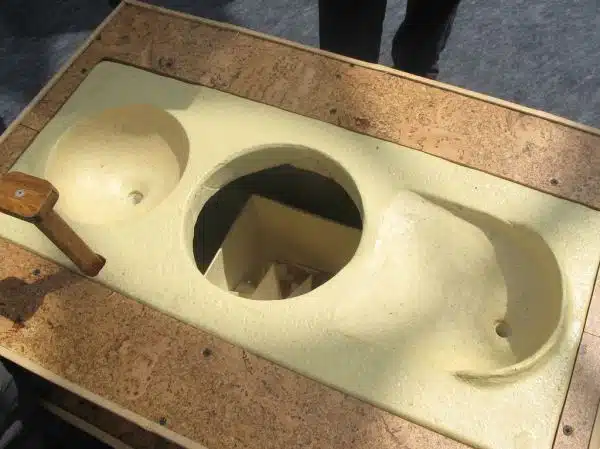


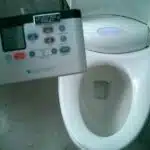

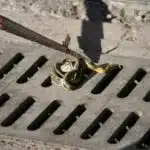

![How To Get Hair Out Of A Bathtub Drain 8 2/365 [Bathtub Drain]](https://green-life.blog/wp-content/uploads/2023/05/cOEu5edpkejq-150x150.jpg.webp)



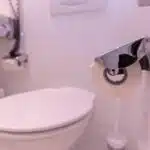


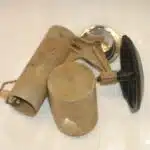








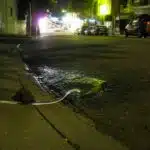



![How To Replace A Bathtub Drain In A Mobile Home 28 2/365 [Bathtub Drain]](https://green-life.blog/wp-content/uploads/2023/05/3ft8KAJsNnjq-150x150.jpg.webp)
